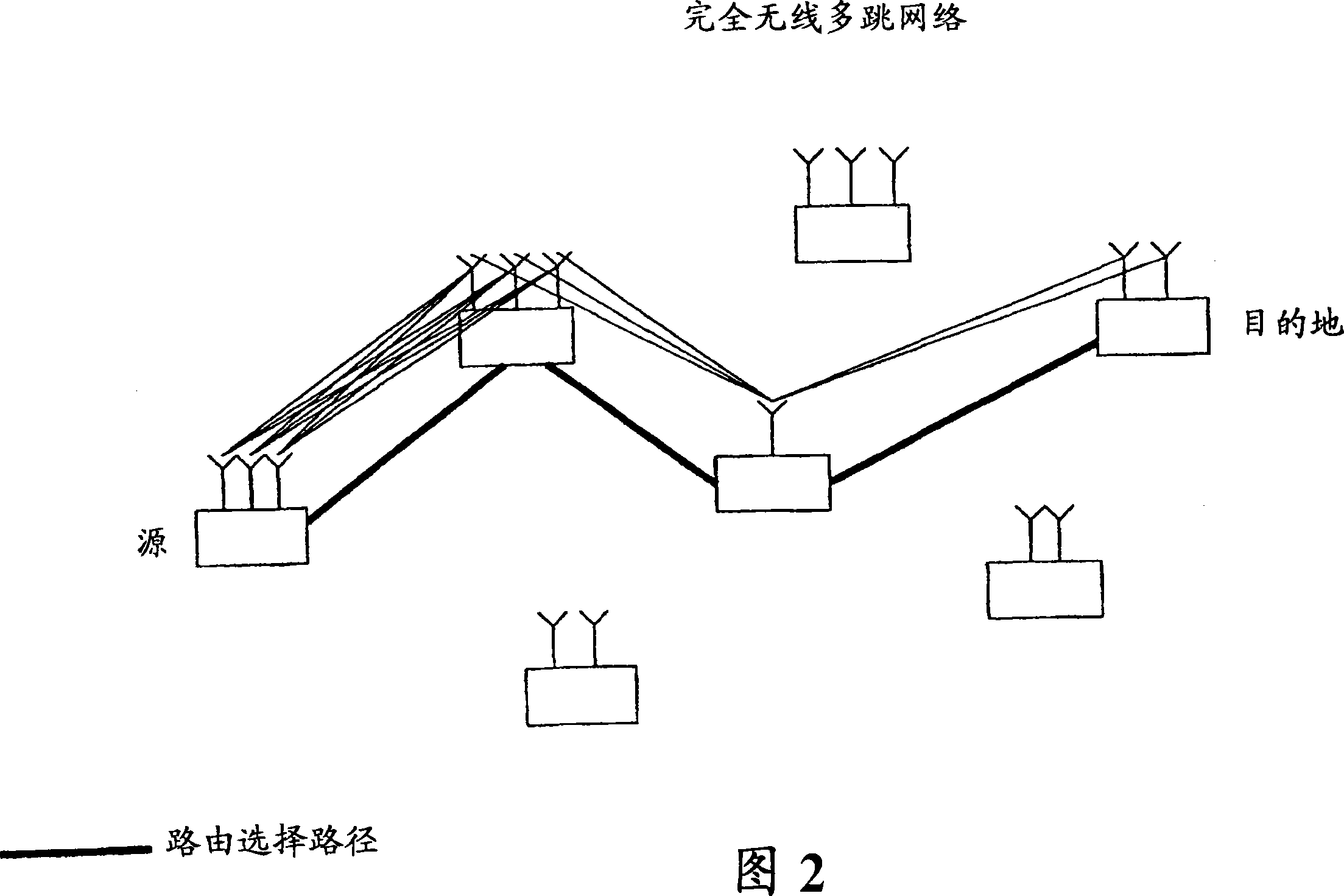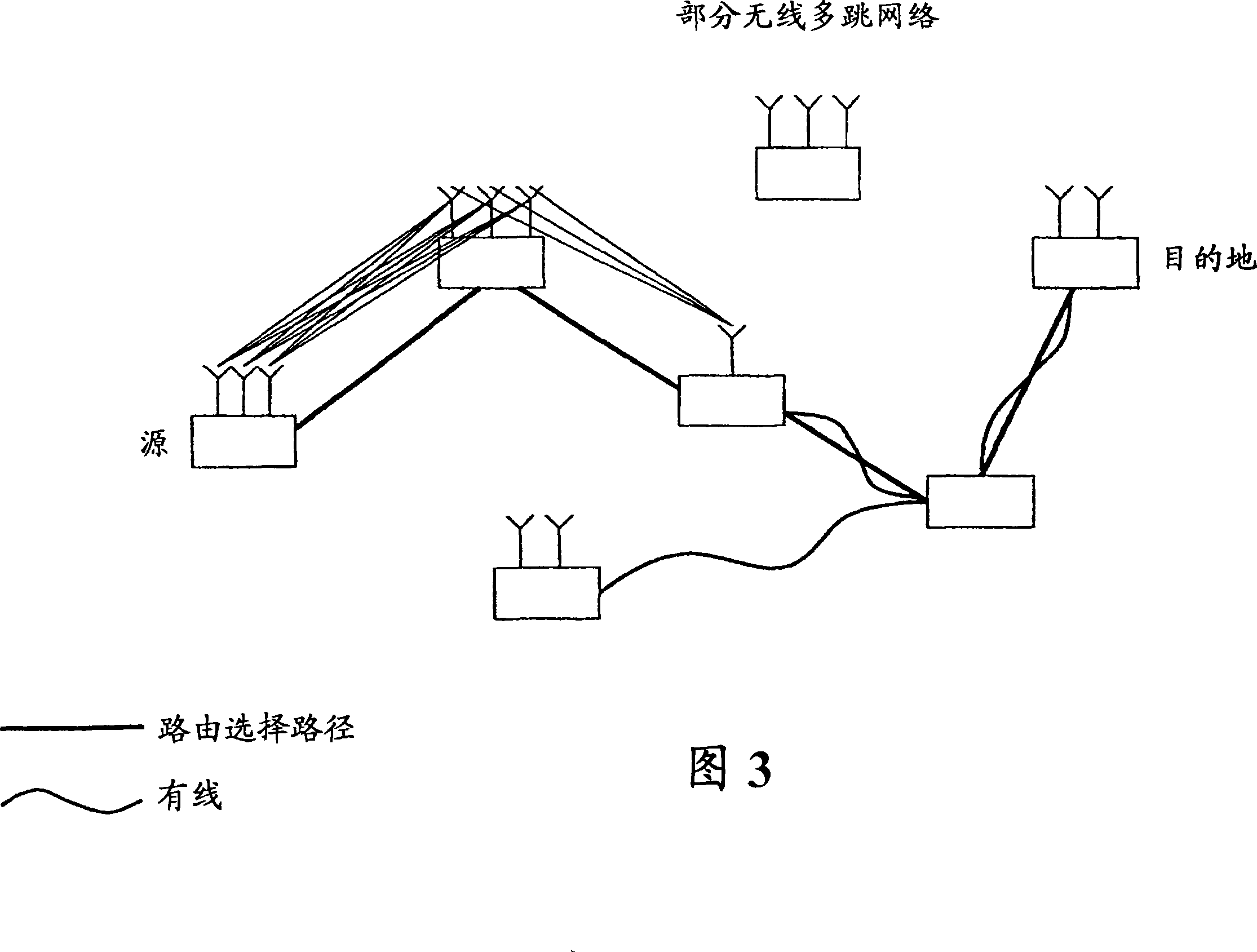Method and arrangement for advanced routing metrics in multihop networks
A wireless multi-hop network and routing technology, applied in the direction of network topology, advanced technology, data exchange network, etc., can solve problems such as not simple
- Summary
- Abstract
- Description
- Claims
- Application Information
AI Technical Summary
Problems solved by technology
Method used
Image
Examples
example
[0155] Fig. 7 is a schematic diagram illustrating an example calculation of a cost tree having nodes distributed in a normalized circular area. In this specific example, a given destination is represented in the middle of the circle, and a cost tree is constructed from the destination node. This corresponds to the case of proactive routing. It should be understood, however, that for so-called reactive routing, it is possible to construct the cost tree in the opposite direction, ie starting from the source - searching for the intended destination. In the calculation of the cost tree, the link cost has been determined according to the reciprocal of the average rate, which considers the multi-channel characteristics. The cost tree is determined according to the shortest path algorithm. Nodes have different numbers of antennas ranging between 1 and 10 (random), and for brevity all nodes operate with a given transmit power (transmit range indicated for the top node). The simplif...
PUM
 Login to View More
Login to View More Abstract
Description
Claims
Application Information
 Login to View More
Login to View More - R&D
- Intellectual Property
- Life Sciences
- Materials
- Tech Scout
- Unparalleled Data Quality
- Higher Quality Content
- 60% Fewer Hallucinations
Browse by: Latest US Patents, China's latest patents, Technical Efficacy Thesaurus, Application Domain, Technology Topic, Popular Technical Reports.
© 2025 PatSnap. All rights reserved.Legal|Privacy policy|Modern Slavery Act Transparency Statement|Sitemap|About US| Contact US: help@patsnap.com



